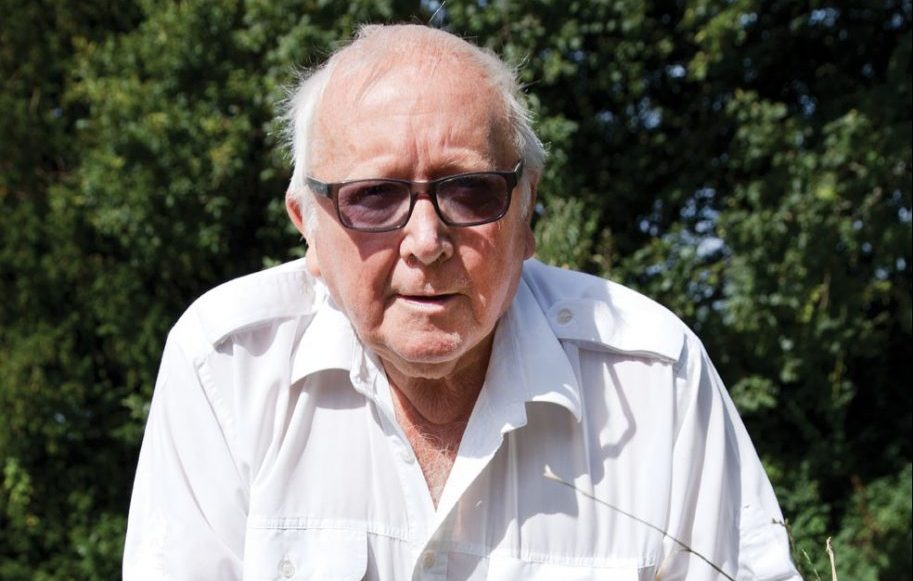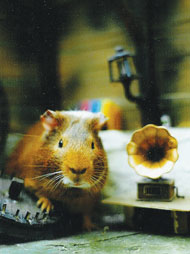 It was an ongoing story about a hamster, a white rat and a guinea pig, and it proved to be arguably the most popular children’s television programme of its time.
It was an ongoing story about a hamster, a white rat and a guinea pig, and it proved to be arguably the most popular children’s television programme of its time.
But what is not so well known is the fact that many episodes of the multi-award winning ‘Tales of the Riverbank’ were filmed on the Isle of Wight, and its co-creator Dave Ellison has lived in Whippingham for more than 40 years.
The exploits of Hammy the Hamster, Roderick Rat and GP the guinea pig, captivated audiences worldwide, with episodes screened in 52 countries and translated into numerous languages, including Chinese. I caught up with Dave to find out more about how he came up with the idea of working with a few small animals, and how he rose to become a renowned film maker and producer.
Born and brought up in London, Dave opted not to go to university, deciding instead to ‘go and find out what the real world was like’. He worked as an apprentice for a telephone and cable company that wanted to get into the television market as soon as the Second World War was over.
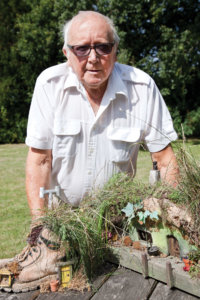 Dave then joined the Army, serving in the Royal Signal Regiment in Palestine, Aden and Libya as a wireless operator, and when he was demobbed he successfully applied for a job with the BBC as a ‘call boy’ at their studios at Alexandra Palace.
Dave then joined the Army, serving in the Royal Signal Regiment in Palestine, Aden and Libya as a wireless operator, and when he was demobbed he successfully applied for a job with the BBC as a ‘call boy’ at their studios at Alexandra Palace.
Within a few weeks of joining the BBC, Dave was promoted to studio manager, coinciding with the opening of the Corporation’s new studios at Lime Grove. He recalled: “While I was still there a group of people came over from the Canadian Broadcasting Corporation (CBC) in Toronto to see how the BBC worked. They went home and the next thing I knew I was invited to be one of a handful of people from the BBC to go to Toronto to help get CBC off the ground.”
Dave accepted, but soon felt he had stepped back in time, and wanted to return home. However, he was persuaded to stay when offered a post as a film editor, even though he knew very little about the work involved. Within six months he was editing CTC’s news programmes, and produced a programme on the Hungarian Revolution of 1965 which won an award, and earned him further promotion.
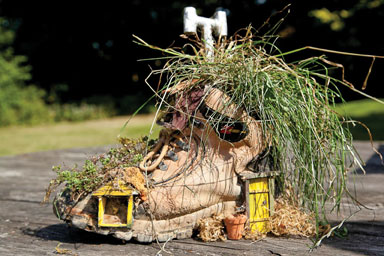 He continued: “I then met a French film producer called Marc Godart who was making a programme based on the French version of Aesop’s Fable, ‘Les Fables de Fontain’ using live animals including goats, pigs and a spider monkey. Large animals were not easy to work with, and on one occasion the monkey jumped off the set, climbed up into the lighting grid in the studio and stayed there for two weeks!
He continued: “I then met a French film producer called Marc Godart who was making a programme based on the French version of Aesop’s Fable, ‘Les Fables de Fontain’ using live animals including goats, pigs and a spider monkey. Large animals were not easy to work with, and on one occasion the monkey jumped off the set, climbed up into the lighting grid in the studio and stayed there for two weeks!
“The whole thing was a disaster, but gave me the idea of using smaller animals that were not going to bite your fingers off. Hamsters were just becoming the ‘in thing’, so I went into a pet store in Toronto and there were a hamster, a guinea pig and a white rat. I suddenly thought ‘there is my cast’!”
By now Dave had gone into business with partner Paul Sutherland running Film Editorial Services Ltd, specialising in making children’s films. Having already made a pilot film based on a bedtime story Dave had had made up for Paul’s two little boys, the next step was to create a pilot with Hammy, a white rat, and a guinea pig.
That all happened in 1959, but alas, CTC decided it was not suitable for children and gave it the thumbs down, even though it won an award at the Canadian Film Awards. Determined Dave took the next plane to England, and met Owen Read, Head of the BBC Children’s TV. Within minutes he had sold the idea, and he left with a contract for 13 episodes, each lasting 15 minutes. Only then did the reality kick in that they had only one episode!
On his r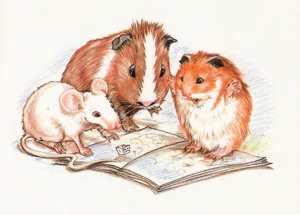 eturn to Canada, he and Paul began writing the stories, and built a 40ft long table-top set, river and all. As the episodes were shot, they learned that a new Canadian station CTV and Australian broadcasters ABC also wanted the series, which by now had been extended to 39 episodes, filmed in black and white. Within a couple of months ‘Tales of the Riverbank’ had gone global. China bought it even though there was no television in the country at the time, so it was shown from mobile cinemas in the back of vans. The BBC ‘voiceover’ for the series was performed by legendary small screen star Johnny Morris, who gave each animal star its own distinctive voice.
eturn to Canada, he and Paul began writing the stories, and built a 40ft long table-top set, river and all. As the episodes were shot, they learned that a new Canadian station CTV and Australian broadcasters ABC also wanted the series, which by now had been extended to 39 episodes, filmed in black and white. Within a couple of months ‘Tales of the Riverbank’ had gone global. China bought it even though there was no television in the country at the time, so it was shown from mobile cinemas in the back of vans. The BBC ‘voiceover’ for the series was performed by legendary small screen star Johnny Morris, who gave each animal star its own distinctive voice.
Dave then spent six years producing documentary films for the Central Office of Information (COI) in London. He said: “After all making documentaries was my job – Hammy was a sideline!” He made documentaries on everything from wars to launching missiles from nuclear subs, and actually climbed Nelson’s Column by ladder. “Nelson dressed on the left,” he smiled.
A documentary on the advent of hovercrafts, being built in East Cowes, brought Dave back to the Island, where he had previously stayed on the houseboat of a friend at Wootton Creek. He was also commissioned by the BBC to film three children’s series, ‘Along the River’, ‘Along the Seashore’ and ‘Along the Trail’ much of which was filmed here. But in one episode of the latter, filmed in Canada, Dave had a lucky escape after nearly being attacked by a grizzly bear!
He never forgot Wootton, and after hiring a barn in the vicinity, he used it as the set for a second series of ‘Tales of the Riverbank’, this time in colour and comprising 26 half-hour episodes. For each episode about half a dozen of hamsters and white rats, with the same markings, were on hand for around five minutes of filming apiece, before they decided it was time to go back to sleep. Guinea pigs were more resilient and only one per series was required.
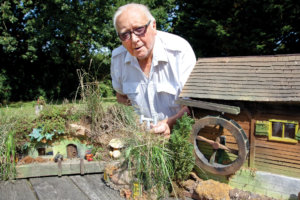 While still living in London, Dave rented properties on the Island, and bought his house at Whippingham initially as a holiday home before moving here permanently. His props, but not his animal stars, are still with him, testament to ‘Tales of the Riverbank’ that earned worldwide recognition and numerous awards.
While still living in London, Dave rented properties on the Island, and bought his house at Whippingham initially as a holiday home before moving here permanently. His props, but not his animal stars, are still with him, testament to ‘Tales of the Riverbank’ that earned worldwide recognition and numerous awards.
In the early 1990s ‘Further Tales of the Riverbank’, were screened by Channel 4 for several years and was marketed around the world. Dave added: “With books, comic strips, videos and now DVDs, I feel my friend Hammy has told his story well.”



